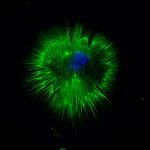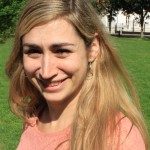Link to Pubmed [PMID] – 22847963
Glia 2013 Jan;61(1):112-20
Microglia, macrophages of the central nervous system, play an important role in brain homeostasis. Their origin has been unclear. Recent fate-mapping experiments have established that microglia mostly originate from Myb-independent, FLT3-independent, but PU.1-dependent precursors that express the CSF1-receptor at E8.5 of embryonic development. These precursors are presumably located in the yolk sac (YS) at this time before invading the embryo between E9.5 and E10.5 and colonizing the fetal liver. Indeed, the E14.5 fetal liver contains a large population of Myb-independent YS-derived myeloid cells. This myeloid lineage is distinct from hematopoietic stem cells (HSCs), which require the transcription factor Myb for their development and maintenance. This “yolky” beginning and the independence from conventional HSCs are not unique to microglia. Indeed, several other populations of F4/80-positive macrophages develop also from YS Myb-independent precursors, such as Kupffer cells in the liver, Langerhans cells in the epidermis, and macrophages in the spleen, kidney, pancreas, and lung. Importantly, microglia and the other Myb-independent macrophages persist, at least in part, in adult mice and likely self-renew within their respective tissues of residence, independently of bone marrow HSCs. This suggests the existence of tissue resident macrophage “stem cells” within tissues such as the brain, and opens a new era for the molecular and cellular understanding of myeloid cells responses during acute and chronic inflammation.

